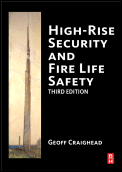Study Ranks State High School Sports Safety Policies

A report from the Korey Stringer Institute provides a ranking of states regarding how well they are prepared for a potential sudden death or catastrophic injury for high school athletes.
According to the report, more than 7.8 million secondary school athletes participate in a wide variety of sanctioned sports annually. From 1982 to 2015, there have been 735 fatalities (185 from direct causes, 550 from indirect causes). During that time, there have also been 626 catastrophic injuries (613 from direct causes, 13 from indirect causes). Direct causes are attributed to trauma (e.g. athlete-to-athlete or athlete-to-object contact). Indirect causes are exertion based (e.g. exertional heat stroke, sudden cardiac arrest, asthma).
The leading causes of death among secondary school athletes are: sudden cardiac arrest, traumatic head injuries, exertional heat stroke, and exertional sickling. Exertional sickling is a potentially fatal medical condition occurring in athletes carrying the sickle cell trait. It occurs when some of the red blood cells change into a “sickle” shape and cause a buildup of red blood cells in small blood vessels. This leads to decreased blood flow, a potential breakdown of muscle tissue, and eventually cell death, known as fulminant rhabdomyolysis.
Researchers gathered health and safety policies surrounding the leading causes of sudden death and catastrophic injury in sport from each state’s public high school athletic association, enacted legislation, and Department of Education that were in place for the 2017-2017 academic year. States received points on the rubric if associated policies were required or mandated to be followed by the state high school athletics association member schools in that respective state. States did not receive points on the rubric if polices were only recommended or encouraged. Each state received an aggregate score based on how many safety policies they had in place and how comprehensive they were. The best score was 100. Final scores were converted into percentages for each state, which were then ranked from 1 to 51 based on their percentage score.
North Carolina has the most comprehensive health and safety polices in place for secondary school athletics, with a score of 78.75%. Colorado has the fewest, with a score of 23%. The median state score was 47.1%. States scoring in the top 10% were North Carolina, Kentucky, Massachusetts, New Jersey, and South Dakota. States scoring in the bottom 10% were Minnesota, Montana, Iowa, California, and Colorado.
http://ksi.uconn.edu/high-school-state-policies/
The complete list of the rankings is:
Rank |
State |
Score (%) |
| 1 | North Carolina | 78.75 |
| 2 | Kentucky | 71.13 |
| 3 | Massachusetts | 67.40 |
| 4 | New Jersey | 67.03 |
| 5 | South Dakota | 60.58 |
| 6 | Missouri | 60.00 |
| 6 | Washington | 60.00 |
| 8 | Hawaii | 59.13 |
| 8 | Wisconsin | 59.13 |
| 10 | Georgia | 56.98 |
| 11 | Arkansas | 56.03 |
| 12 | New York | 55.75 |
| 13 | Mississippi | 55.25 |
| 14 | West Virginia | 54.33 |
| 15 | Oregon | 53.59 |
| 16 | Illinois | 53.38 |
| 17 | Tennessee | 52.73 |
| 18 | Arizona | 52.00 |
| 19 | Texas | 50.80 |
| 20 | District of Columbia | 50.55 |
| 21 | Virginia | 49.40 |
| 22 | Pennsylvania | 49.00 |
| 23 | Florida | 48.25 |
| 24 | New Mexico | 48.08 |
| 25 | Alabama | 47.20 |
| 26 | Maine | 47.10 |
| 27 | Rhode Island | 46.73 |
| 28 | Indiana | 46.00 |
| 29 | Nevada | 45.00 |
| 30 | Utah | 44.00 |
| 31 | Ohio | 43.93 |
| 32 | Delaware | 43.73 |
| 33 | Alaska | 43.40 |
| 34 | Vermont | 42.38 |
| 35 | Louisiana | 41.00 |
| 36 | Maryland | 40.63 |
| 37 | Oklahoma | 40.50 |
| 38 | Connecticut | 40.01 |
| 39 | Idaho | 40.00 |
| 40 | South Carolina | 39.80 |
| 41 | Michigan | 38.73 |
| 42 | North Dakota | 38.00 |
| 43 | Nebraska | 37.75 |
| 44 | New Hampshire | 36.00 |
| 45 | Kansas | 35.75 |
| 46 | Wyoming | 35.00 |
| 47 | Minnesota | 33.35 |
| 48 | Montana | 33.25 |
| 49 | Iowa | 33.00 |
| 50 | California | 26.00 |
| 51 | Colorado |
23.00 |
Looking for a reprint of this article?
From high-res PDFs to custom plaques, order your copy today!








